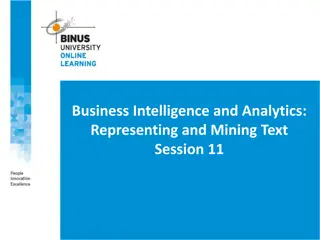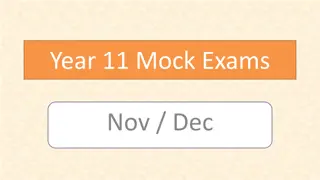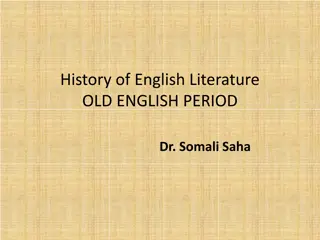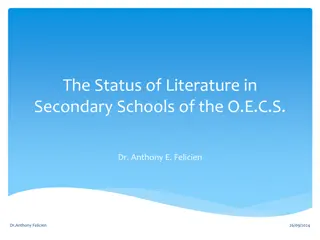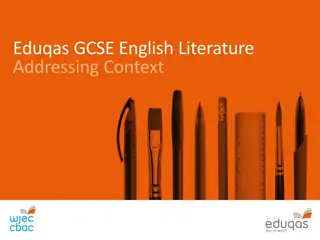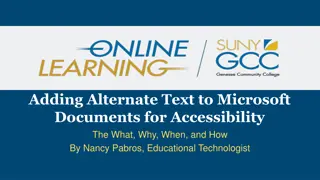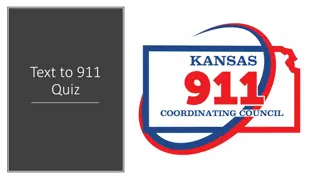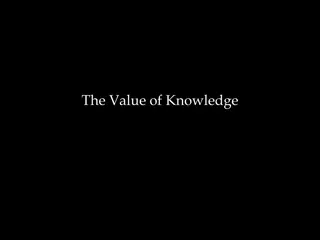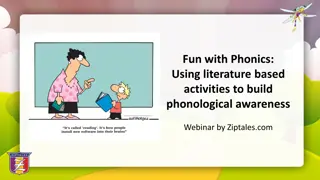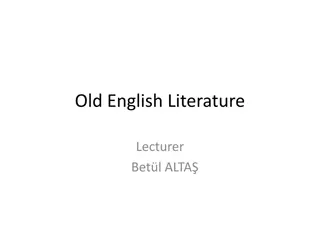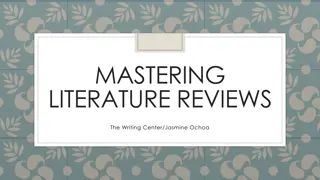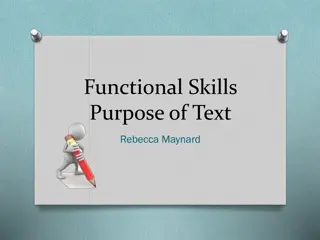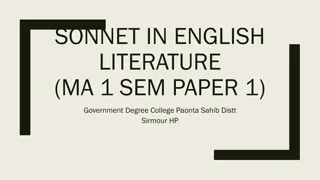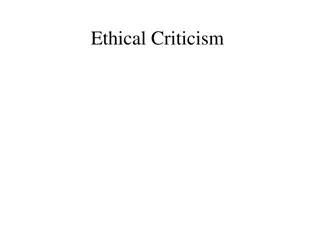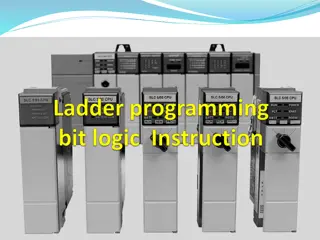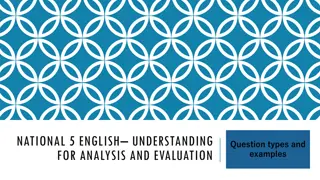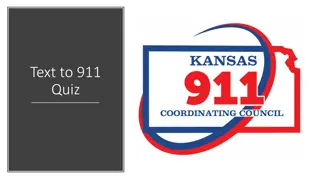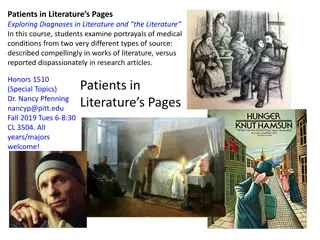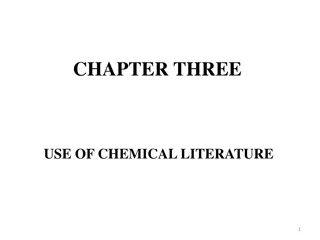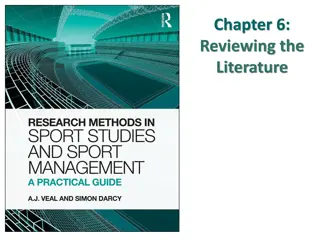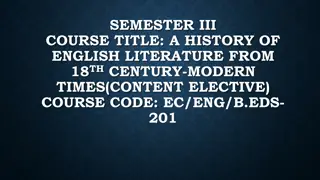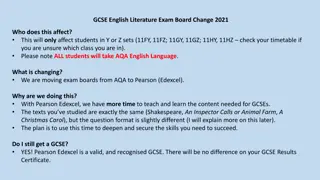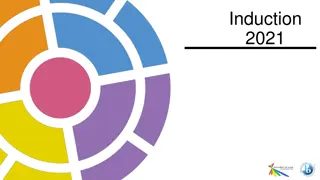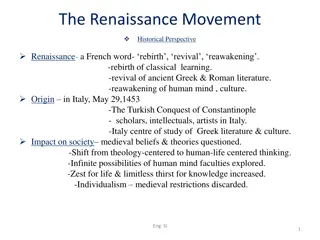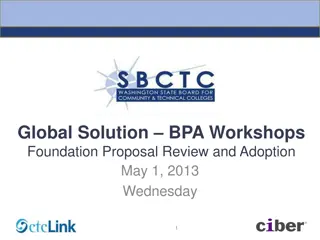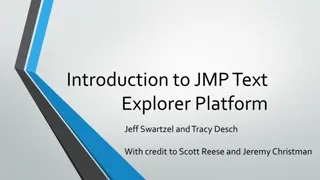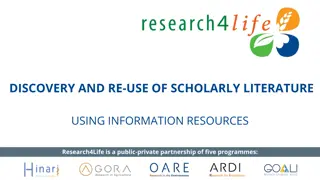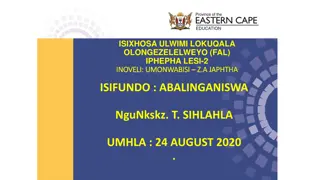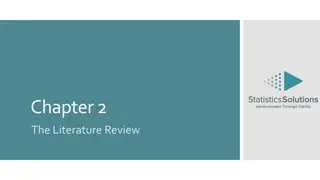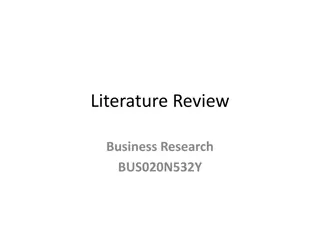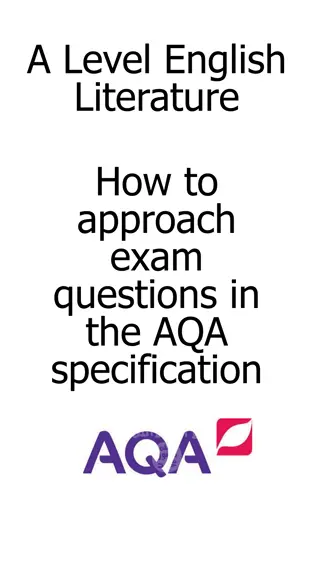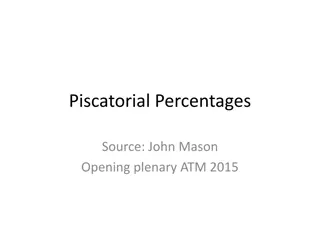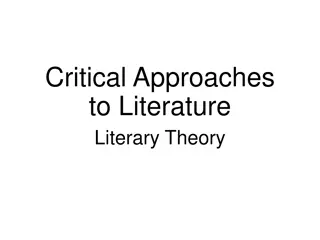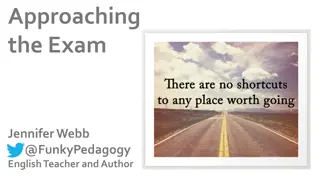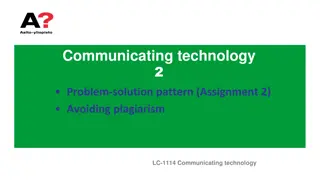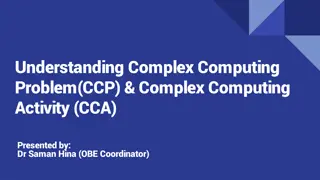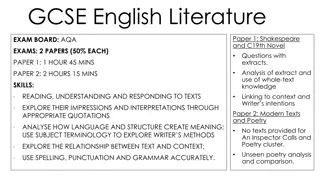Understanding Problem-Solution Text Structure in English Literature
Explore how authors use the problem-and-solution text structure to convey ideas effectively in English literature. Learn through examples and exercises, such as identifying problems and solutions in a play. Enhance your comprehension and analytical skills in reading and interpreting texts.
- English literature
- Problem-solution text
- Author techniques
- Understanding structure
- Reading comprehension
Download Presentation

Please find below an Image/Link to download the presentation.
The content on the website is provided AS IS for your information and personal use only. It may not be sold, licensed, or shared on other websites without obtaining consent from the author. Download presentation by click this link. If you encounter any issues during the download, it is possible that the publisher has removed the file from their server.
E N D
Presentation Transcript
Benha University Faculty of Arts Department of English English In Use 2ndGrade Complied By/ Professor NazikAbdel-Lateef PHD, WALES UNIVERSITY, UK 2019 / 2020
In this lesson, youll learn that some authors tell you about problems and how to solve them. SOME AUTHORS USE a problem-and-solution text structure to organize their ideas. An author may state a problem, and then describe a solution. Example After the school fire, there was a lot of damage. Our computer lab was a total loss. So we put on a fund-raising carnival the next Saturday. We used all the money to buy new computers! Problem: A fire ruined the school computers. Solution: Raise money at a school carnival for new computers. Sometimes an author tells a solution, and then states the problem it solves.
Example We had a great fund-raising carnival last Saturday. We raised a lot of money to buy new computers. We needed them after we had a fire at the school. Our computer lab had been a total loss! Solution: Have a fund-raising carnival. Problem: Fire ruined school computers. Recognizing structure helps readers better understand the relationships between events. Try this one. a problem-and-solution text
Example It ll be okay, our bus driver said as she closed the cell phone. We ll have this flat tire fixed in no time. The school principal said a mechanic is on the way. Problem: a flat tire on school bus. Solution: school is sending mechanic. You can use a problem-solution chart to record relationships like this. Problem Solution fire damages computers flat tire have a fund-raiser mechanic to fix tire
Exercise 1: Read the selection, and then answer the questions that follow. (check your book p.61) 1.What problem does Cole have in the play? a. He needs to learn how to do the mambo. b.He needs his brother to sign his report card. c. He needs to have a new suit for the school dance. d.He needs to ask a girl to the school dance. 2.Why does Cole think Jared can solve the problem? a. Jared s older and girls seem to like him. b.Cole knows Jared has a sister named Marci. c. Jared studied about girls in ancient Egypt. d.Cole thinks Jared likes Sabrina s mom.
3.What is Jareds main problem in the play? a. He has a crush on Sabrina s mom. b.He needs to find out the name of the red-haired girl. c. His MP3 player broke. d.His favorite shoes don t fit anymore. 4.How does Cole solve Jared s problem? a. He calls Sabrina to get the red-haired girl s name. b.He sees the red-haired girl s picture in the school yearbook. c. He spots the girl on TV giving the weather. d.He remembers that her last name is Elliot.
An inferenceis a logical guess you make based on facts in the text plus what you already know from life. Maybe you or a friend have had a similar experience. Or maybe you read about something similar in a book or saw it in a movie. You can put the facts and personal knowledge together to figure out what s going on and why characters act or feel the way they do. Example A soaked Randy slipped inside the door and put his dripping umbrella in the corner. As he crossed the room to our table, his shoes made a squishy, squeaking sound. What a day! he moaned as he plopped into a chair and grabbed a menu. Making inferences helps good readers better understand the text. Inferring also builds readers interest as they continue reading to find out if their inferences were or weren t correct.
The following table can help you track guesses as you read. List details you find in the text, what you already know, and what you infer from them. The text says . . . Randy is wet. he comes inside. I know . . . you use umbrellas in rain. restaurants have menus. So I infer that . . . it s raining hard. he s in a restaurant.
Exercise 2: Read the selection, and then answer the questions that follow. (check your book p.69) 1.What can you infer from the first paragraph? a. Mr. Reyman is a new teacher in the school. b.The kids need to practice for the school musical. c. There s an important math test coming up soon. d.Most of the kids don t understand meteorology. 2.Why might you infer that the narrator s father is bald? a. He likes to wear hats. b.He said he used to have more hair. c. The narrator said he had a shiny head. d.The hat fit the narrator.
3.What can you infer about the fraction find? a. Some kids couldn t find anything with a fraction on it. b.Raquelita found the most interesting item. c. Paco brought in his whole team. d.The Beatles record was the most interesting thing. 4.From the story, what can you infer about the narrator s family? a. They get along well together. b.They argue a lot. c. They live in a trailer. d.They don t have time to do things together.



